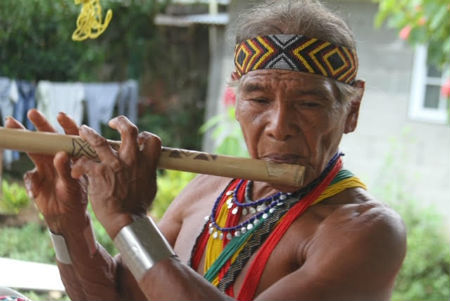PANAMA CITY, PANAMA – Yesterday, on International Day of Indigenous Peoples, the Panama Tourism Authority (ATP) presented to Panama’s National Council for the Integral Development of Indigenous Peoples (CONDIPI) the proposal of creating a new tourist circuit called "Panama Indígena” (Indigenous Panama), developed with the recently formed National Chamber of Tourism Indigenous (CANATURI).
 CONDIPI, is made up of the 12 traditional authorities of the seven indigenous peoples of Panama, and chaired by the Vice Minister of Indigenous Affairs Ausencio Palacio. Panama’s Minister of Government, Janaina Tewaney, also participated showing support of the initiative as it adequately supports the sustainable development of the country’s indigenous people.
CONDIPI, is made up of the 12 traditional authorities of the seven indigenous peoples of Panama, and chaired by the Vice Minister of Indigenous Affairs Ausencio Palacio. Panama’s Minister of Government, Janaina Tewaney, also participated showing support of the initiative as it adequately supports the sustainable development of the country’s indigenous people.
The Indigenous Panama tourist circuit highlights Panama’s pre-Columbian cultures as well as the seven living indigenous peoples of the country: Bri Bri, Naso, Ngäbé and Buglé, in the forests and savannas of the western provinces; and the Guna, Wounaan and Embera, east of the Panama Canal.
The new proposal is part of the Heritage Routes system developed by ATP to offer visitors a living example of Panama’s cultural heritage. Focusing on the ecological riches of the “green” and “blue” heritage that surrounds indigenous peoples, the circuit will include the ecological wealth of the Panama Canal Basin, which is one of the main maritime routes in the world as well as the community organization of the Gunas, settled on the paradisiacal Caribbean beaches of the more than 300 islands that make up the Archipelago of Guna Yala (San Blas).
“With ATP working alongside the new CANTURI, the circuit was developed in coordination with the Colmena (“Beehive”) Plan, one of the flagship programs of President Laurentino Cortizo Cohen, to promote the development of the 300 townships with the greatest socioeconomic vulnerability in the country,” said Minister Eskildsen. “Pilot communities will be selected based on objective criteria and giving priority to those communities of the Colmena Plan, where economic poverty, and natural and cultural wealth coincide.”
Through this collaboration, training programs will be developed for the organizers of the tourist attractions that make up the circuit; as well as promotional campaigns that highlight its attractions, such as dances and traditional music, handicrafts, ecological hiking, traditional medicine, indigenous gastronomy and site museums. The objective of this initiative is to strengthen the incidence of sustainable indigenous tourism, through guidelines, policies and strategies consistent with the worldview and wisdom of Panama’s native peoples and their ancestral customs.
The “Heritage Routes” strategy is part of the Sustainable Tourism Master Plan, which will be presented for approval in 30 days. This Master Plan is focused on highlighting the multiculturalism of the country and its role in Panama’s history and natural environment as unique tourist offerings.
For more information on Panama’s cultural history and rich ecological treasures please visit: https://www.visitpanama.com/


